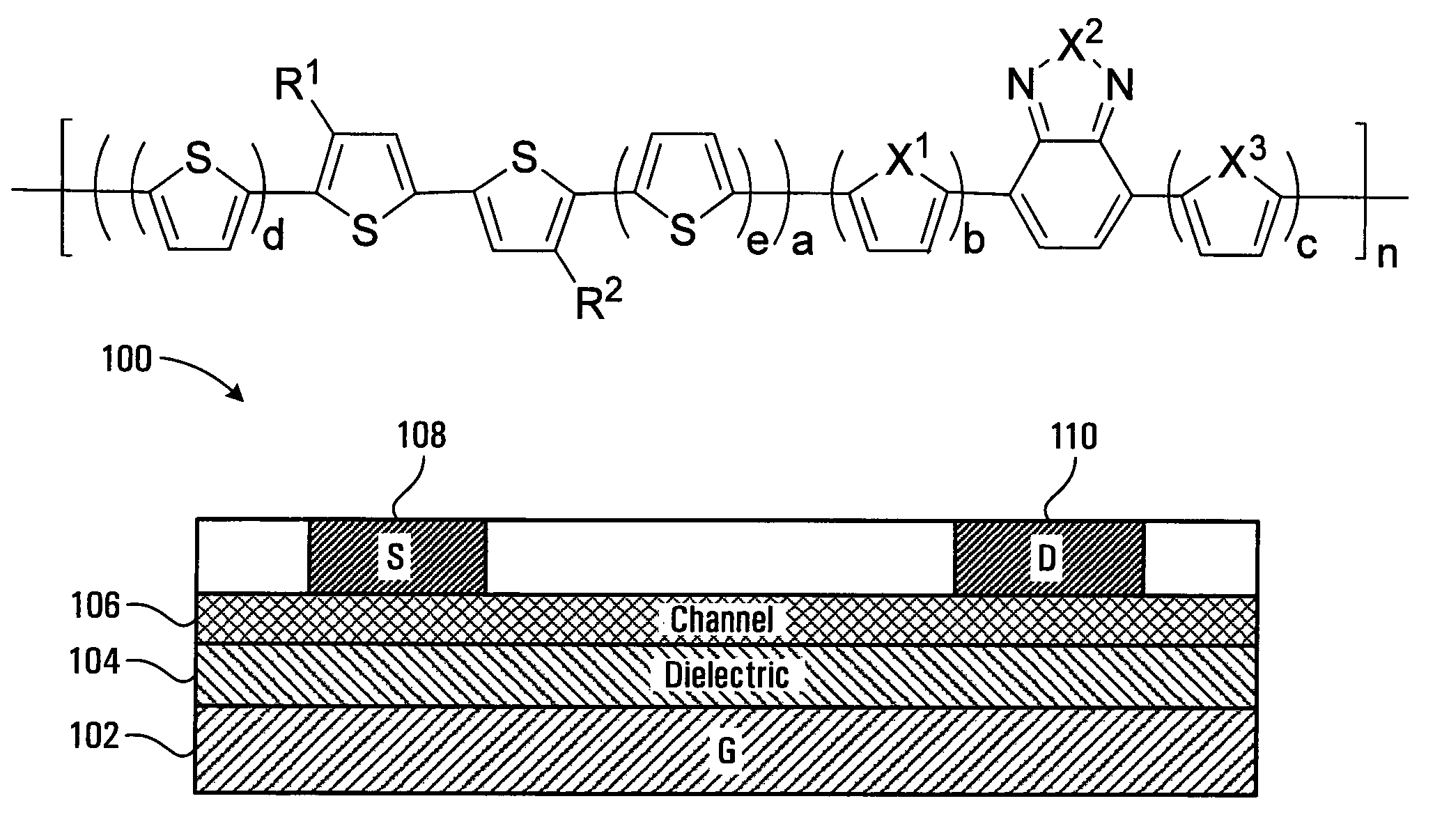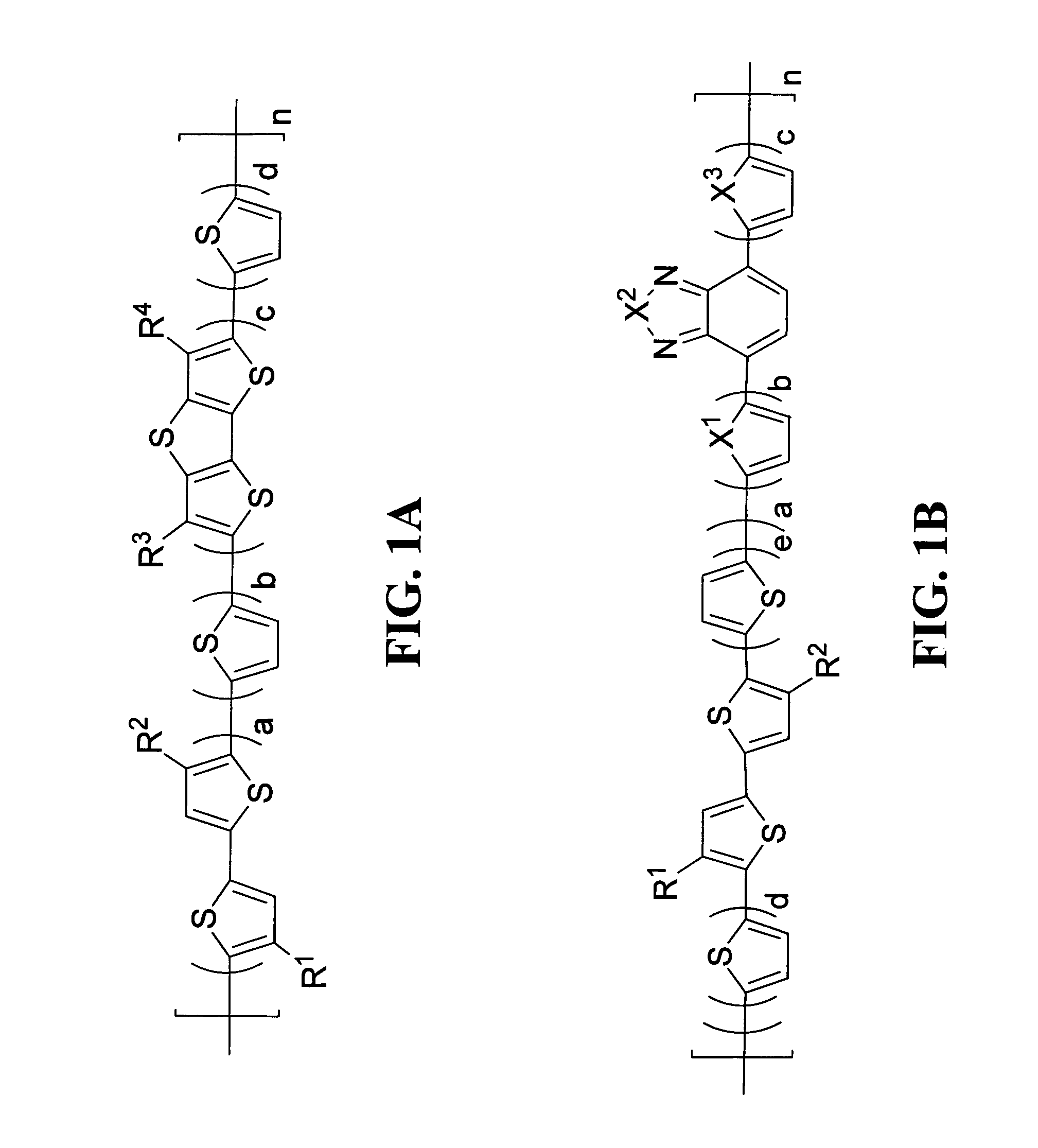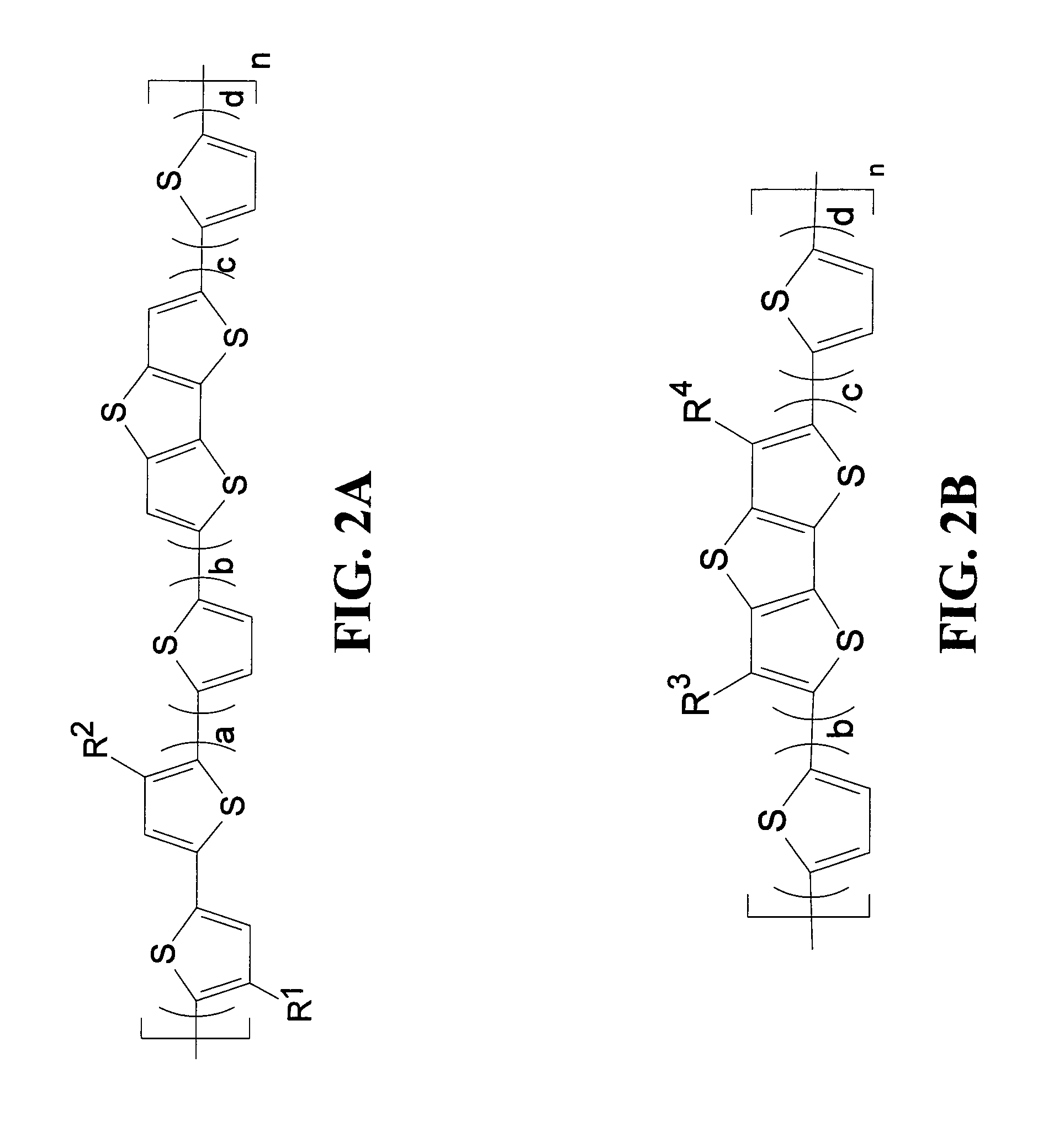Polymeric semiconductors, devices, and related methods
a technology of polymer semiconductors and semiconductors, applied in the field of semiconductor materials, can solve the problems of not necessarily improving power conversion efficiency, reducing the equivalent open circuit voltage, and absorbing sunlight in the amoun
- Summary
- Abstract
- Description
- Claims
- Application Information
AI Technical Summary
Benefits of technology
Problems solved by technology
Method used
Image
Examples
examples
[0132]In the Examples, the starting materials were used as received, unless otherwise specified.
[0133]In the Examples, 1H and 13C NMR data were obtained using a Bruker™ DPX 400 MHz spectrometer with chemical shifts referenced to CDCl3; matrix assisted laser desorption / ionization time-of-flight (MALDI-TOF) mass spectra were obtained on a Bruker Autoflex TOF / TOF instrument using dithranol as a matrix and silver trifluoroacetate as an ionizing salt when necessary; differential scanning calorimetry (DSC) was carried out under nitrogen on a DSC Q100 instrument (scanning rate of 10° C. min−1); thermal gravimetric analysis (TGA) was carried out using TGA Q500 instrument (heating rate of 10° C. min−1); cyclic voltammetry (CV) experiments were performed using an Autolab™ potentiostat (model PGSTAT30) by Echochimie™; and UV-Vis spectra were recorded on a Shimadzu™ model 2501-PC UV-VIS spectrometer.
[0134]CV measurements were made at room temperature in dichloromethane with 0.1 M tetrabutylammo...
example i
Synthesis of 3-(2-octyldodecyl)thiophene
[0135]1.3 g (54 mmol) of magnesium turnings, a catalytic amount of iodine, and 50 mL of dry THF was mixed in a flask and heated to slight reflux under nitrogen. A solution of 2-octyldodecyl bromide (18.1 g, 50 mmol) and 25 mL of dry THF was added drop-wise into the mixture. The mixture was then allowed to reflux for 3 h. After resulting grey solution was cooled to room temperature, transferred into a dry droping funnel, and added drop-wise into a dry THF solution of 3-bromothiophene (6.5 g, 40 mmol) and Ni(dppp)Cl2 (160 mg, 1.2 mmol) at 0° C. The mixture was heated to reflux overnight under nitrogen atmosphere. The mixture was then cooled and a dilute hydrochloric acid aqueous solution was added to quench excess Grignard reagent. The crude product was extracted from the mixture with hexane, washed with water, and purified by silica gel chromatography eluting with hexane. The final product was 7.2 g of colorless oil (49%). The product was chara...
example ii
Synthesis of 2-bromo-3-(2-octyldodecyl)thiophene
[0136]A solution of N-bromosuccinimide (2.58 g, 14.5 mmol) in 100 mL of dimethylformamide (DMF) was added drop-wise into a solution of 3-(2-octyldodecyl)thiophene (4.90 g, 13.2 mmol) in 300 DMF at −20° C. The mixture was stirred overnight at room temperature. Next, the DMF was removed under vacuum and 100 mL water was added. The mixture was extracted with hexane three times and the organic layers were collected. After removal of hexane, a crude product was obtained and was purified by column to afford 5.60 g of the final product in the form of colorless oil (96%). 1H NMR (CDCl3, 400 MHz, ppm) δ 7.18-7.17 (d, 1H, J=5.6 Hz), 6.76-6.75 (d, 1H, J=5.6 Hz), 2.50-2.48 (d, 2H, J=7.2 Hz), 1.64 (m, 1H), 1.30-1.25 (br, 32H), 0.90-0.87 (t, 6H).
PUM
| Property | Measurement | Unit |
|---|---|---|
| temperature | aaaaa | aaaaa |
| thickness | aaaaa | aaaaa |
| thickness | aaaaa | aaaaa |
Abstract
Description
Claims
Application Information
 Login to View More
Login to View More - R&D
- Intellectual Property
- Life Sciences
- Materials
- Tech Scout
- Unparalleled Data Quality
- Higher Quality Content
- 60% Fewer Hallucinations
Browse by: Latest US Patents, China's latest patents, Technical Efficacy Thesaurus, Application Domain, Technology Topic, Popular Technical Reports.
© 2025 PatSnap. All rights reserved.Legal|Privacy policy|Modern Slavery Act Transparency Statement|Sitemap|About US| Contact US: help@patsnap.com



